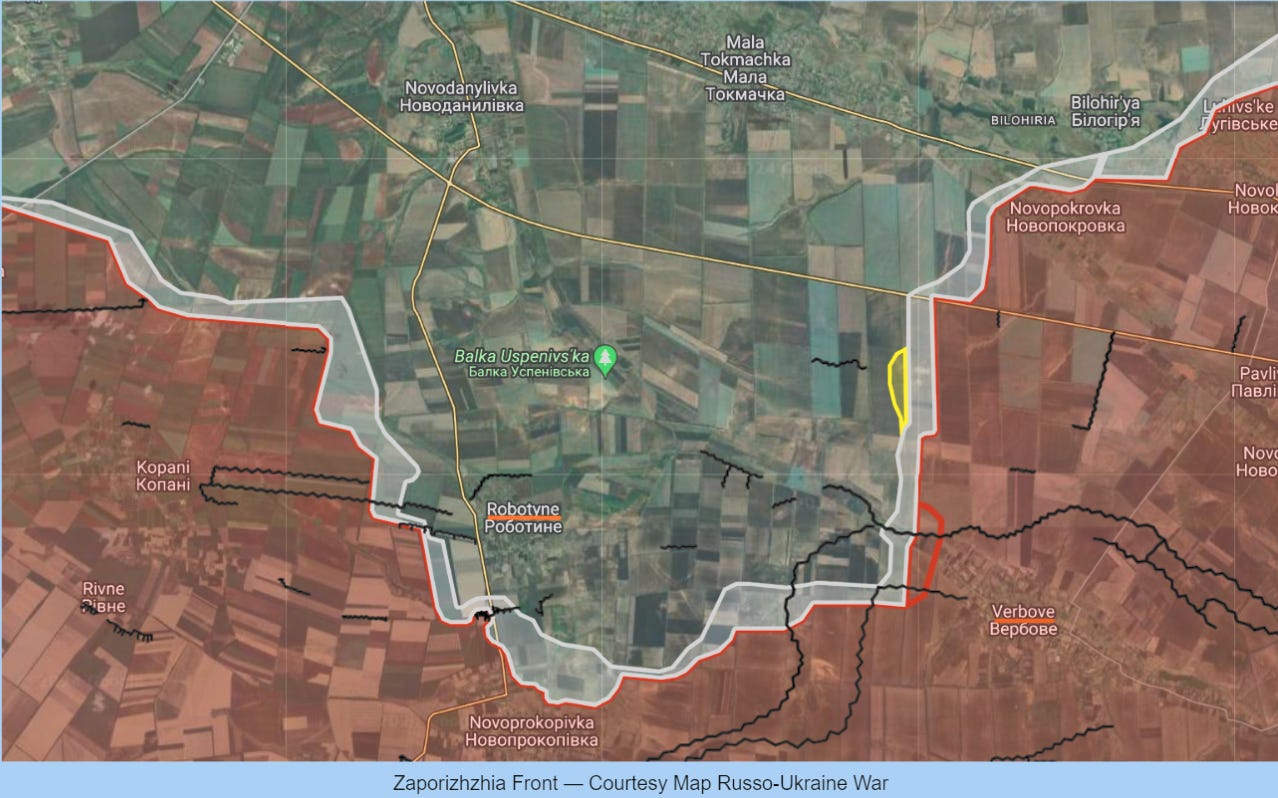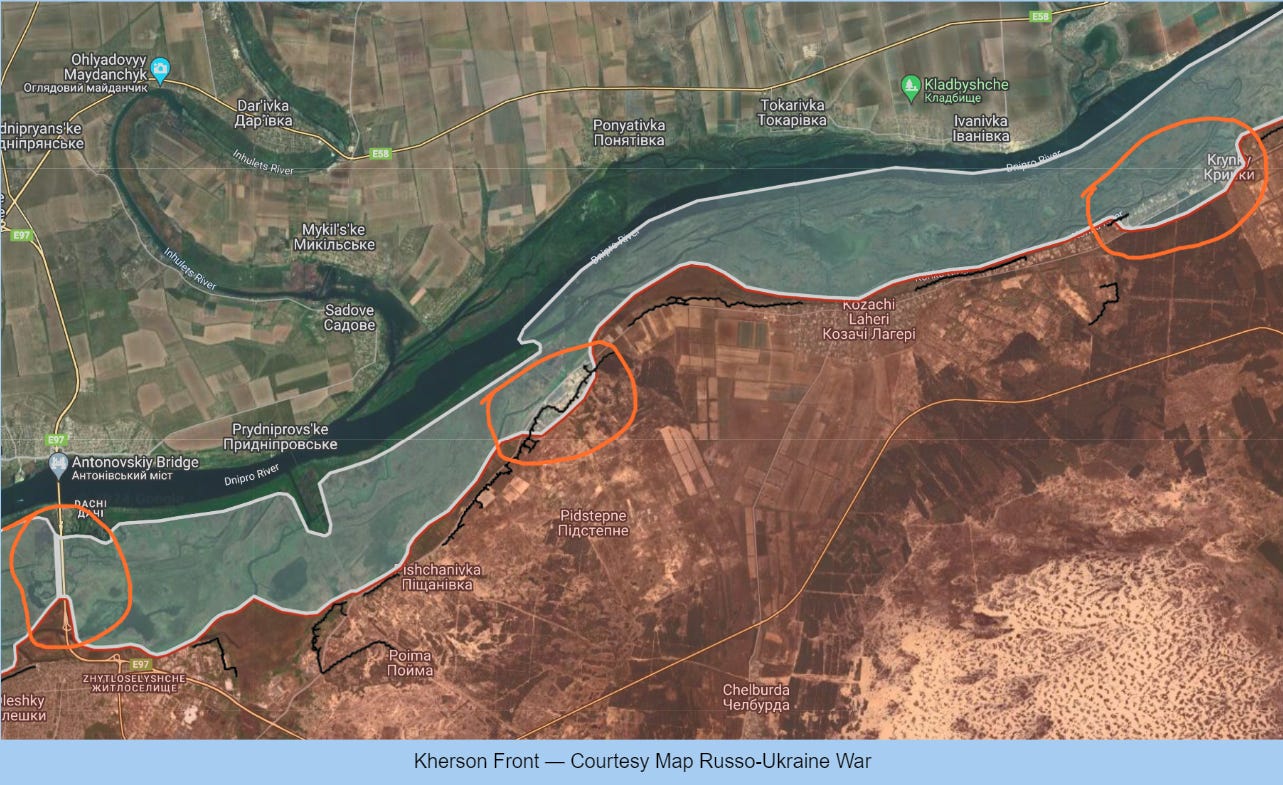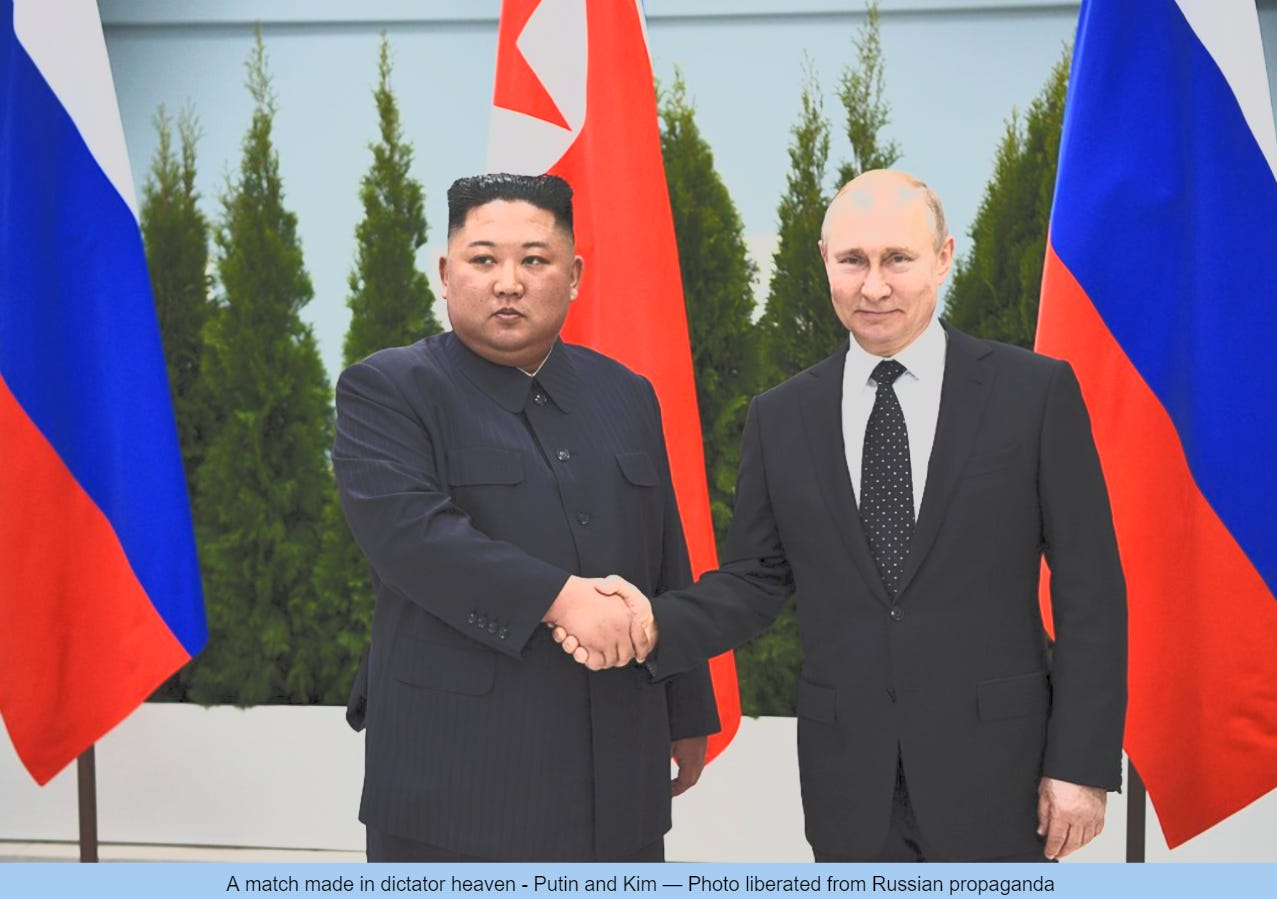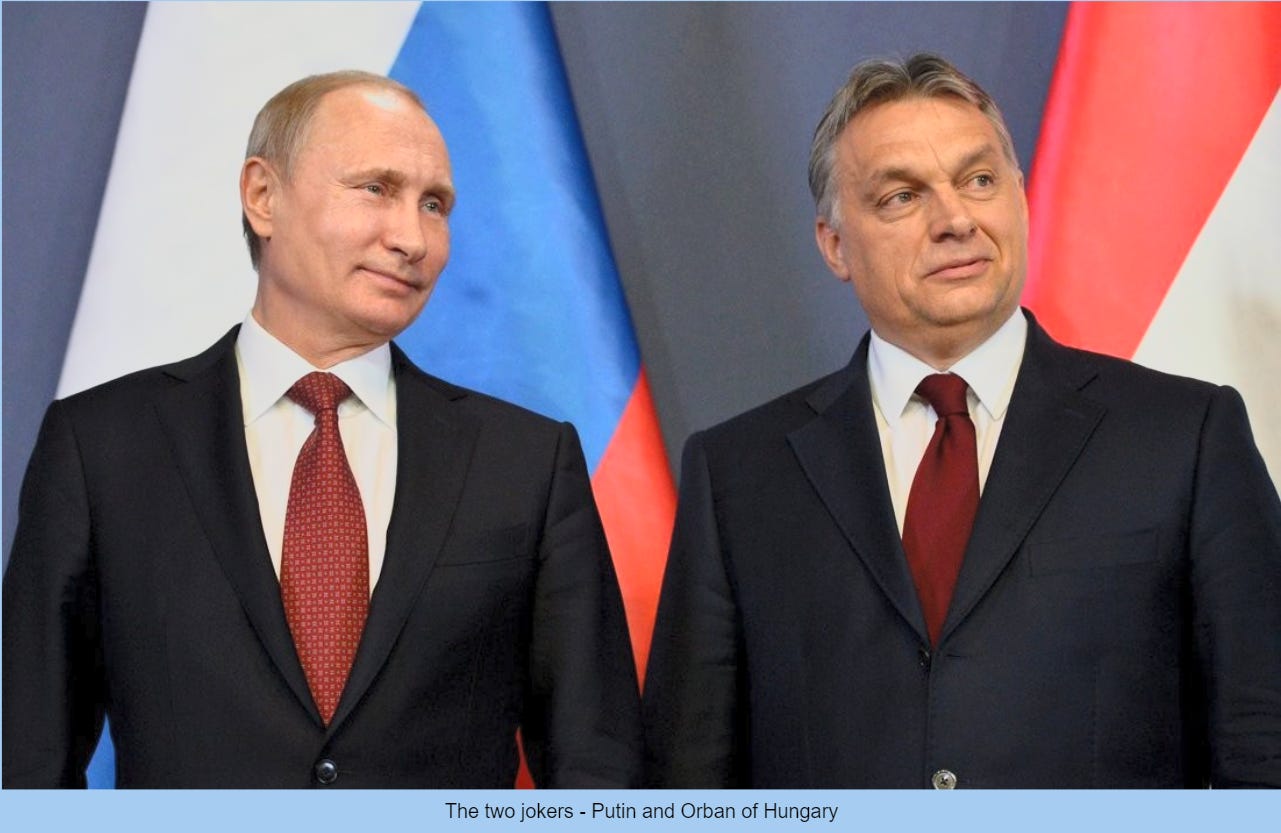Slava Ukraini! Since June 2023 I have provided a daily draft for the Ukraine War Brief Podcast collecting news from over 40 sources daily much of which ends up in the script. I will make this Draft available here for those who wish to keep up with events on a daily basis.
INSIDE UKRAINE
ALONG THE CONTACT LINE
GSAFU Morning Report
The General Staff of the Armed Forces of Ukraine in its situation update at 06:00 on Feb. 7 stated that it was day 714 of the full-scale invasion of the Russian Federation against Ukraine.
During the past day, 92 combat engagements took place. Over the past 24 hours, the enemy carried out 4 missile strikes, 27 air strikes, and 88 MLRS attacks across the positions of our troops and settlements. As a result of the Russian attacks, unfortunately, there are dead and wounded among the civilian population. Destruction and damage to residential buildings and other civilian infrastructure.
At the same time, Ukrainian soldiers continue to inflict losses in manpower and equipment on the occupying troops, exhausting the enemy along the entire front line.
In the past 24 hours, the Ukrainian Air Force launched air strikes on 13 concentrations of the russian troops and 3 enemy anti-aircraft missile complexes and destroyed on KH-59 missile
Ukrainian Missile units attacked 2 control points, 2 personnel focus areas, 2 ammunition warehouses and 3 enemy artillery systems.
The Khortytsia operational-strategic group is responsible for the Kup’yans’k, Lyman, and Bakhmut axes, in the northeastern part of Ukraine.
Kup’yans’k axis: The enemy did not conduct any offensive (assault) operations.
Lyman axis: Ukrainian defenders repelled 21 attacks near Terny and Hyehorivka (Donetsk oblast) and Bilohorivka (Luhansk oblast)
Bakhmut axis: Ukrainian forces repelled 12 attacks near Bohdanivka and Klishchiivka (Donetsk oblast)
The Tavria operational-strategic group is responsible for the Avdiivka, Mar’inka, Shaktars’ke, and Zaporizhzhia axes, in the central-eastern and southeastern part of Ukraine.
Avdiivka axis: Ukrainian defenders continue to hold back the enemy who keeps trying to encircle Avdiivka. AFU soldiers are standing their ground and inflicting major losses on the invaders. Ukrainian Defense Forces repelled 21 enemy attacks near Novobakhmutivka and Avdiivka, plus 8 near Pervomais’ke and Nevel’s’ke (Donetsk oblast).
Mar’inka axis: Ukrainian Defense Forces continue to hold back the occupiers in the vicinities of Heorhiivka, and Novomykhailivka (Donetsk oblast). Troops repelled 20 attacks in that area.
Shakhtarske axis: Ukrainian Defense Forces repelled 1 attack south of Zolota-Nyva, (Donetsk oblast)
Zaporizhzhia axis: Ukrainian Defense Forces repelled 4 attacks near Robotyne and west of Verbove (Zaporizhzhia oblast).
The Odesa operational-strategic group is responsible for Kherson, Qırım, (also known as Crimea) and the Black Sea.
Kherson axis: Ukrainian defenders continue to expand the bridgehead. Despite significant losses, the enemy does not abandon its attempts to dislodge Ukrainian troops from their positions. Over the past day, the enemy carried 2 unsuccessful assaults on the positions of the Ukrainian Defense Forces.
TEMPORARILY OCCUPIED TERRITORIES
Zaporizhzhia nuclear plant facing 50% staff shortage, expiring fuel
The head of the IAEA, Rafael Grossi, and Ukraine’s Energy Minister Herman Haluschenko said in a joint press conference that Zaporizhzhia NPP has just 5,000 staff but requires 10,000 trained and licensed personnel, alerting “a very fragile state” of the plant and the exponential growth of technical problems as the two-year mark of its occupation looms.
Russian troops occupied the biggest nuclear power plant in Europe, Zaporizhzhia NPP, in the Zaporizhzhia Oblast (southeastern Ukraine) on 4 March 2022. Its six reactors have all been in shutdown for nearly eighteen months, but still hold large amounts of nuclear fuel that must be kept adequately cooled. Russia restricts international observers’ access to the nuclear power plant.
The IAEA chief also detailed external power supply concerns from past blackouts and reservoir issues impacting the facility’s cooling systems. “There is no assurance of stability,” Grossi assessed.
Furthermore, Grossi and Haluschenko outlined issues with Zaporizhzhia’s nuclear fuel rods, many reaching their 6-year designed operating lifetimes. With expiration, fuel unloading and storage would significantly influence nuclear safety, they said.
On 7 February, Grossi will visit the Zaporizhzhia power plant for the fourth time since its occupation. The IAEA head vowed “to insist on conducting the deepest possible assessment from our side on the technical condition” of the plant.
THE HOME FRONT
Russian missile assault kills one, and injuring at least 16 civilians
Russian forces launched a massive missile attack on multiple locations in Ukraine, including Kyiv, Kharkiv, Mykolaiv, and Lviv oblasts. The attack killed one, injured at least 16 civilians, damaging residential buildings and infrastructure. Euromaidan reports.
On Feb 7, Russian forces initiated another assault on Ukraine, early in the morning, employing attack drones and missiles across multiple locations, including Kyiv, Kharkiv, Mykolaiv, Cherkasy, and Lviv oblasts. The attack inflicted casualties, with one fatality reported in Mykolaiv and at least 16 more civilians injured in Kyiv and Kharkiv.
At about 5 a.m., air raid alarms went off in Kharkiv Oblast, with reports of explosions by 6 a.m According to preliminary reports, the Russians targeted Kharkiv five S-300. Three people were treated after the strikes in Kharkiv, a 52-year-old woman, as well as 59- and 64-year-old men, were injured.
In Kyiv, initial explosions hit around 7 a.m., prompting Mayor Vitali Klitschko to confirm air defense operations. At 7:42 a.m., more blasts were reported, with military authorities confirming continued air defense activity.
Emergency Services were dispatched to the Dniprovskyi district following the explosions. Power outages affected some buildings in the area, attributed to damage from missile debris to two high-voltage lines, The Kyiv City Military Administration
At 8:09, the mayor reported a fire at an 18-story building in the Holosiivskyi district, with firefighters en route. Later, he revealed car and auto repair shop fires, injuring at least one person.added that Russian missile strikes damaged power lines in the Holosiivskyi and Dniprovskyi districts.
THE RUSSIAN WORLD
Moscow believes it has eliminated the threat of Wagner Group
The UK Ministry of Defence in its Feb. 7 intelligence update reported that the new Wagner commander Anton Yelizarov who goes by the alias Lotus posted his first video message after the deaths of the Wagner PMC financier Yevgeny Prigozhyn and former Wagner field commander Dmitry Utkin in August 2023.
Yelizarov detailed the location of Wagner Group's new headquarters in Russia’s Rostov Oblast, co-located with the barracks of Russia’s 150th Motor Rifle Division.
Yelizarov also claimed that the new base of the Wagner Group would house the new Volunteer Corps of the Russian National Guard (Rosgvardia), which indirectly confirms the subordination of the Wagner Group to the Rosgvardia.
The report assesses that the new Rosgvardia Volunteer Corps will likely be made up of experienced Wagner militants and used to strengthen Russia's military efforts in Ukraine and expand Russian influence in Africa.
"The Russian state highly likely authorised the construction of Wagner’s new base and highly likely perceives that by subordinating Wagner to Rosgavrdia, it has removed any potential threat Wagner might pose to Russia’s regime security."
NEWS WORLDWIDE
Moscow believes it has eliminated the threat of Wagner Group
The UK Ministry of Defence in its Feb. 7 intelligence update reported that the new Wagner commander Anton Yelizarov who goes by the alias Lotus posted his first video message after the deaths of the Wagner PMC financier Yevgeny Prigozhyn and former Wagner field commander Dmitry Utkin in August 2023.
Yelizarov detailed the location of Wagner Group's new headquarters in Russia’s Rostov Oblast, co-located with the barracks of Russia’s 150th Motor Rifle Division.
Yelizarov also claimed that the new base of the Wagner Group would house the new Volunteer Corps of the Russian National Guard (Rosgvardia), which indirectly confirms the subordination of the Wagner Group to the Rosgvardia.
The report assesses that the new Rosgvardia Volunteer Corps will likely be made up of experienced Wagner militants and used to strengthen Russia's military efforts in Ukraine and expand Russian influence in Africa.
"The Russian state highly likely authorised the construction of Wagner’s new base and highly likely perceives that by subordinating Wagner to Rosgavrdia, it has removed any potential threat Wagner might pose to Russia’s regime security."
NEWS WORLDWIDE
Moscow accuses Baltic states of ‘sabotage’ in Russian president election
The Russian government on Monday summoned Lithuanian, Latvian, and Estonian envoys, accusing them of trying to sabotage next month’s Russian presidential election. LRT reported.
Moscow accuses the Baltic States of ignoring Russia’s requests to ensure the security of polling stations in its embassies.
“The chargés d’affaires of the Baltic states in Moscow were summoned to the Russian Ministry of Foreign Affairs in connection with the absence of a proper response by the authorities of Latvia, Lithuania, and Estonia to the repeated appeals of the Russian side to ensure security at polling stations at the Russian embassies in Vilnius, Riga, and Tallinn during the presidential elections in March this year,” the Russian foreign ministry statement said.
Moscow demanded that the Baltic States “take all necessary measures” to ensure the security of Russian embassies and voters. “Creating difficulties in the conduct of elections would cause serious protest among Russian citizens living in these countries,” it warned.
“In the event of continued sabotage, we will act decisively in a bilateral context and international structures,” the ministry said.
Responding to Moscow’s statements, the Lithuanian Ministry of Foreign Affairs called the accusations bizarre.
“It is not for the Kremlin to explain and lecture democratic countries about elections,” said Paulina Levickytė, spokeswoman for the foreign minister.
“We take the view that Russia’s decision to organise so-called elections on dates almost coinciding with the Crimea annexation [anniversary], and to organise them in the temporarily occupied or illegally annexed territories of Ukraine, is an illegal and deliberate provocation by the Russian Federation,” Levickytė said.
Lithuania does not and will not recognise voting or election results in the occupied or illegally annexed territories of Ukraine.
Moscow gives North Korea access to the international banking system in exchange for arms
An article in the New York Times on Feb. 6 revealed that Russia has allowed the release of millions of dollars in frozen North. Korean assets and may be helping its isolated ally with access to international banking networks, assistance that has come after the North’s transfer of weapons to Moscow for use against Ukraine, according to American-allied intelligence officials.
The White House said last month that it had evidence that North Korea had provided ballistic missiles to Russia, and that the North was seeking military hardware in return. Pyongyang also appears to have shipped up to 2.5 million rounds of ammunition, according to an analysis by a British security think tank.
While it is unclear whether Russia has given North Korea the military technology it may want, new banking ties would be another sign of the steady advancement in relations between the two countries.
Russia has allowed the release of $9 million out of $30 million in frozen North Korean assets deposited in a Russian financial institution, according to the intelligence officials, money that they say the impoverished North will use to buy crude oil.
In addition, a North Korean front company recently opened an account at another Russian bank, the intelligence officials say, evidence that Moscow may be helping Pyongyang get around U.N. sanctions that prohibit most banks from doing business with North Korea. Those sanctions have choked the North’s economy and largely shut the country off from international financial networks.
The new bank account is held in South Ossetia, an artificial area of Georgia seized illegally by Russia.
Access to financial networks is just one item on North Korea’s wish list, according to experts. What the North most wants from Russia, is advanced military hardware, such as satellite technology and nuclear-powered submarines.
EU urged to sanction Russian aluminium
European aluminium producers — supported by four EU countries — are pressing the bloc to slap an embargo on cheap imports of the metal from Russia as part of an expected sanctions package that will mark two years since the invasion of Ukraine. Politico reports.
Even two years after Russian President Vladimir Putin launched his full-scale assault, Europe is still buying 9 percent of its aluminium imports from Russia, which funded Moscow's war machine to the tune of some €2.3 billion in 2022.
Struggling with high energy costs and cheap foreign competition, European producers of the widely-used metal are hoping sanctions against Russia — which remains the world’s third largest producer — can bring some relief.
European industrial consumers oppose sanctions on aluminium. Complaining it would drastically increase their expenses, argued that "sanctions should not be weaponized."
One of the diplomats said: “The timeline is too short for something bigger,” adding it was better to get the package over the line on time and to highlight the recent measures the EU has taken to support Ukraine.
Canada approves free trade agreement with Ukraine
The House of Commons of Canada has passed a bill on an updated free trade agreement with Ukraine, which Canadian Prime Minister Justin Trudeau and President Volodymyr Zelenskyy signed in September, CBC reports.
The bill was passed despite criticism from the conservative opposition, which was unhappy with the carbon pricing provision.
"In order for this trade deal to be implemented, Ukraine must agree to promote a carbon tax. That is not something we can support," Conservative House leader Andrew Scheer said.
The trade agreement does not impose an obligation on the Ukrainian government to introduce a carbon tax. It contains a provision that the two countries will cooperate to "promote carbon pricing and measures to mitigate carbon leakage risks."
Grumpy here: Canada’s Conservative party has its power base in Alberta, the largest oil producing region of Canada. They object to everything they perceive as threatening Big Oil’s supremacy. Additionally the present Conservative opposition has taken a totally adversarial approach to the ruling Liberal party and object to literally EVERYTHING the government does or says.
Switzerland is considering closer ties with NATO
Switzerland is officially, famously neutral and not a NATO member. But it's not that simple. Neutrality is kind of their shtick as it were. Ukrainska Pravda reports.
Times are changing though, and NATO appears now much more attractive to the Swiss citizens, in light of increased Soviet aggression throughout Europe. as stated in the article on Swissinfo by Thomas Stevens' article
"In view of the significant deterioration in the security situation there is a need to strengthen Switzerland’s defence capability," the Swiss government said in a statement on January 31.
They emphasise: "In addition, security and defence policy will be geared more consistently to international cooperation, especially with NATO, the EU and neighbouring countries."
The Russian invasion of Ukraine in February 2022 shook up the European security framework. NATO, which French President Emmanuel Macron had dismissed in 2019 as becoming brain-dead, has got a new lease of life with the accession of Finland last year and once-neutral Sweden next in line to join.
Since the war in Ukraine there has been much debate in Switzerland about a rapprochement with NATO, and the move has found support in almost all political camps and among the public. The question is how close this cooperation should be.
Most Swiss people would like closer ties with NATO, but they are not eager to join the Alliance.
In January 2024, NATO Secretary General Jens Stoltenberg and Swiss President Viola Amherd held consultations at the World Economic Forum in Davos. The compromises Switzerland would have to make to gain access to NATO's protection, including its "nuclear umbrella", are unclear.
EU initiates legal proceedings against Hungary over its so-called "sovereignty protection" law
The European Commission has initiated legal proceedings against Hungary over its so-called "sovereignty protection" law, the Commission's press service reports.
"This decision follows a thorough assessment by the Commission of the new law on the Defence of National Sovereignty, which the Hungarian Parliament adopted on 12 December 2023," the European Commission said in a statement.
The draft law provides for establishing a so-called Office for the Defence of Sovereignty in Hungary, which is supposed to "monitor" those suspected of "threatening the integrity of the country". The document does not clearly define who will be suspected.
Organisations, associations, and portals that are funded from abroad are under threat. The law also prescribes criminal penalties for the use of foreign funding in the context of elections.
The national opposition defines the adopted bill as a threat to democracy in Hungary.
MILITARY & TECH
Ukraine’s Long-Range Strike Drones, Strategically Target Deep Inside russia
Ukraine is increasingly employing kamikaze drones, utilising them for extended-range attacks on strategic targets deep inside russia Defence Express writes.
This serves several purposes. The targets themselves, such as oil storage sites and airfields, are of strategic importance. Additionally, it stretches russian air defences, forcing some to be deployed far away from the front lines.
In a publication by OSINT analyst HI Sutton, several variants of Ukrainian OWA-UAVs, informally known as kamikaze drones, are listed, which Ukraine uses to strike the rear of the aggressor.
Mugin-5
Initially, Ukraine leveraged commercially available drones such as the Chinese built Mugin-5. Mugin-5 UAV was used in August 2022 to attack the Black Sea Fleet headquarters in Sevastopol and other strategic targets. These have been superseded by Ukrainian produced designs.
UJ-22 Airborne
The Ukrjet UJ-22 Airborne is a single engine drone which can either carry an internal warhead or several air-dropped bombs. Payload is up to 20 kg. At about 3.7 meters long and a wingspan of 4.2 meters, it is one of the largest OWA-UAVs known to be in service. Range is reported as 800 km.
The UJ-22 is confirmed to have been employed in attacks on Moscow, including in February 2023.
Morok
A sleek-looking OWA-UAV based on the RZ-60 target drone. It has a comparatively shorter range of 300 km and a small warhead of just 3 kg. It is launched with the aid of a rocket and can achieve a respectable 290 kmph.
UJ-25 Skyline
The UJ-25 Skyline is essentially a weaponized development of the Ukrajet UJ-23 Topaz target drone. It is a jet powered type with generally stealthy lines and distinctive forward swept wings. Few details are available. At least one has been reported in russia.
UJ-26 Beaver
One of the better known types, the Beaver (Bober) has a distinctive canard layout with sleek fuselage and inverted tail. The type was introduced in 2023 and has reportedly entered mass production. Range is in the order of 1,000 km and payload is reported as 20 kg. This type has been used to attack Moscow and other targets in russia.
Lyutyy
Lyutyy is relatively large with a traditional UAV construction. It has a passing resemblance to the Turkish-made Bayraktar TB2, but not in detail. It is apparent from photographic evidence that Lyutyy is related to the pre-war Antonov AN-BK-1 Horlytsia (Turtle Dove) design.
AQ-400 Scythe
The Terminal Autonomy AQ-400 Scythe is a volunteer project which has entered serial production. It has a crude box-like fuselage and tandem wings with distinct end plates on the forward set. Range is slightly shorter than some other types, reported at 750 km but payload heavier at 32 kg. Payload can reportedly be increased to some 70 kg with a reduced range.
Additionally there have been other unidentified or experimental drones used
That’s it for today’s Draft folks if you would like to keep up with events in Ukraine daily please consider subscribing, its free!
Feel free to share this update with your friends. Heroyam Slava!































